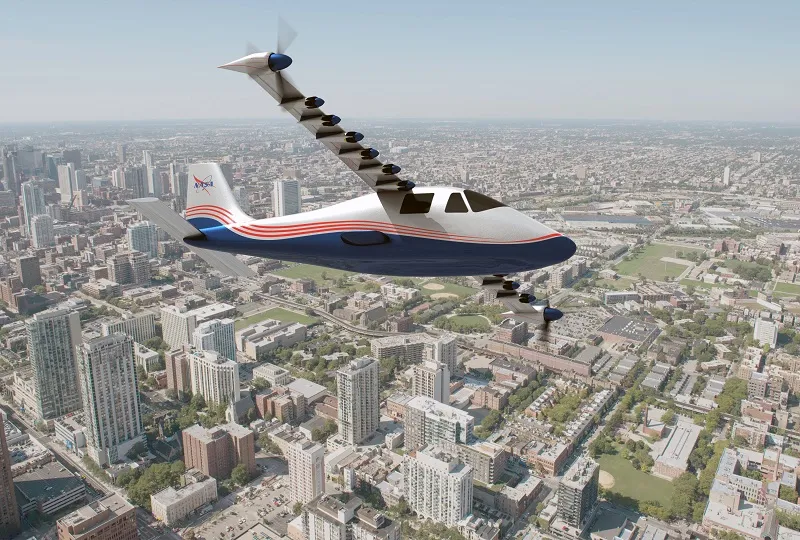
Electric dreams: NASA to fly first crewed X-plane in 20 years.
Oct 04, 2019

NASA is set to launch its first crewed X-plane in two decades, marking a significant milestone in aviation technology. This innovative aircraft, designed to test advanced flight concepts, aims to enhance safety and efficiency in air travel. The X-plane program has a rich history of pioneering developments, and this latest iteration will focus on integrating cutting-edge technologies that could revolutionize the aviation industry. With a skilled crew onboard, the mission emphasizes both research and the potential for future commercial applications, showcasing NASA's commitment to leading advancements in aerospace exploration and sustainable flight solutions.
NASA is set to make headlines once again with its ambitious plans to fly the first crewed X-plane in two decades. This groundbreaking project is not only a testament to the agency's commitment to innovation but also reflects its ongoing mission to explore new frontiers in aviation technology. The electric X-plane, part of NASA's efforts to develop sustainable flight solutions, is poised to revolutionize the aviation industry. In this article, we will delve into the significance of this project, its implications for the future of flight, and how it aligns with current trends in eco-friendly aviation.
The Rise of Electric Aviation
The aviation industry is witnessing a significant shift toward electric and hybrid aircraft, driven by the urgent need to reduce carbon emissions and enhance efficiency. The introduction of electric planes not only aligns with global sustainability goals but also opens new avenues for innovation. This shift is critical as the world grapples with climate change and seeks cleaner, more efficient transportation solutions.
NASA's X-57 Maxwell
The X-57 Maxwell is NASA's flagship project in its electric aviation initiative. Designed to be the first all-electric X-plane, it aims to demonstrate the potential of electric propulsion systems in reducing noise and emissions. The aircraft is equipped with advanced technology that allows it to fly with significantly lower environmental impact compared to traditional aircraft.
Key Features of the X-57 Maxwell
One of the standout features of the X-57 Maxwell is its innovative design, which incorporates distributed electric propulsion. This technology allows for more efficient flight by distributing the thrust across multiple small electric motors. The following table highlights some of the key features of the X-57 Maxwell:
| Feature | Description |
|---|---|
| Electric Propulsion | Utilizes multiple electric motors for enhanced efficiency and reduced emissions. |
| Noise Reduction | Designed to operate at significantly lower noise levels than conventional aircraft. |
| Sustainability | Aligns with global efforts to create eco-friendly aviation solutions. |
| Advanced Materials | Incorporates lightweight materials for improved performance and efficiency. |
Implications for the Aviation Industry
The successful flight of the X-57 Maxwell will have far-reaching implications for the aviation sector. It is expected to pave the way for the development of commercial electric aircraft, which could significantly alter the landscape of air travel. Airlines may soon be able to operate electric planes for short-haul flights, reducing operational costs and enhancing their appeal as environmentally conscious carriers.
Challenges Ahead
While the prospects for electric aviation are promising, several challenges remain. The development of robust battery technology is crucial for achieving longer flight ranges and operational efficiency. Additionally, regulatory frameworks need to adapt to accommodate new technologies, ensuring safety and efficiency in the skies.
Collaborations and Partnerships
Nasa's electric aviation initiatives have sparked collaborations with various stakeholders, including aerospace manufacturers, research institutions, and government agencies. These partnerships are essential for pooling resources and expertise to overcome the challenges associated with electric aircraft development.
The Future of Flight
The flight of the X-57 Maxwell marks an exciting chapter in the history of aviation. With the ongoing advancements in electric propulsion technology, the future of flight looks increasingly sustainable. As NASA continues to push the boundaries of what is possible, the dream of a greener, more efficient aviation industry becomes more attainable.
Conclusion
NASA's plan to fly the first crewed X-plane in two decades is a significant milestone in the journey toward sustainable aviation. The X-57 Maxwell exemplifies the potential of electric propulsion and its ability to transform the aviation landscape. As the world continues to prioritize environmental responsibility, initiatives like these will be crucial in shaping the future of air travel.
In summary, electric aviation is not just a dream; it is becoming a reality. With NASA leading the charge, the aviation industry is on the brink of a revolution that promises to change the way we think about air travel. The journey ahead may be challenging, but with innovation and determination, the sky is truly the limit.
Related Articles

Explore Thailand: The Best Islands to Visit for Paradise, Adventure, and Relaxation

The Ultimate Guide to the Best Islands in Thailand for Your Next Getaway

Do babies need passports? How to get a passport for a newborn

How to get a U.S. passport fast: here’s how to expedite the process

What is Mobile Passport Control: 5 reasons why you should use it

SENTRI vs. Global Entry: A detailed guide

Do you need a passport to go to the Bahamas? Let’s find out

Do you need a passport to go to Mexico? A detailed guide

Do you need a passport to go to Canada? We got the answer

Do You Need a Passport for a Cruise: An Essential Travel Guide

Booster Seat Requirements: All the Rules to Follow in Your Rental Car

What Are the World’s Most Powerful Passports, and How Does Yours Rank?

How to Take a Passport Photo at Home: A Helpful Guide

You've got to have heart! Southwest's new livery

Your opinion: Should water be free on low cost carriers?

Young women bolder than guys as solo travellers
